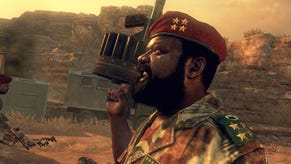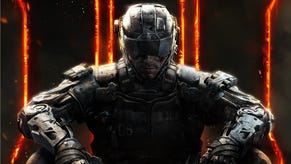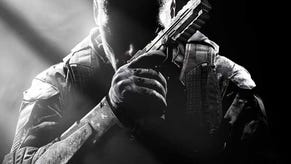Black Ops 2 campaign debriefed: time paradox
Call of Duty: Black Ops 2's campaign ventures into the future, but do its ideas feel like relics from the past? VG247's Dave Cook investigates.
When it first hit the scene the Call of Duty series retold history by putting a Hollywood slant on real tales of courage and sacrifice. Today, you're essentially James Bond in a fantasy world performing death-defying feats, playing around with gadgets and saving the world from an assortment of maniacs almost single-handedly.
This is perfectly fine, of course, as the series has never been a war sim. Its silly, over-the-top fun for fans of action cinema everywhere, and while it doesn't batter the senses like Modern Warfare 3's 'let's just throw more s**t on the screen' ethos, this is a spectacle in its own right.
However, the original Modern Warfare campaign is widely regarded to be the zenith of Call of Duty campaigns despite its relative simplicity, and quite rightly, because it's a focused effort that really stands up if you revisit it today. So much so that many gamers have desperately want the series to match or surpass Infinity Ward's effort.
“It’s only when Menendez’s endgame is revealed that you actually become conflicted. He’s fighting for the 99% – the poorer classes – and the campaign strong-arms you into accepting his cause to some degree.”
Treyarch's first Black Ops gave it a decent stab, its tale of redacted CIA dossiers, mind-bending sleeper agents and the madness of Vietnam had the potential to raise the bar, but it got a tad too wacky towards the end to be taken seriously as a epic showstopper.
By looking to the year 2025, the studio has wisely given itself a blank canvas to explore a whole new assortment of global conflicts and expensive new toys, yet continues to fall back on action movie parodies and familiar gameplay issues. But it is still the best contender to Call of Duty 4's crown to date.
The plot kicks off with an elderly Frank Woods retelling the story of how Alex Mason and Hudson rescued him after the events of the first Black Ops. It's during these flashbacks that you're introduced to Raul Menendez, the villain of the piece.
He's a great bad guy - his harrowing past as interesting as the future he's trying so hard to dominate. Dark Knight scribe David S. Goyer has tried to fashion a sympathetic villain in Menendez, but some attempts at pity fall flat, and serve to amuse instead.
It's only when Menendez's endgame is revealed that you actually become conflicted. He's fighting for the 99% - the poorer classes - and the campaign strong-arms you into accepting his cause to some degree.
Two future missions expertly contrast the distinct class divide. The first is a tense battle up a flooded street in Afghanistan as civilians pick through garbage for scraps. The next moment, you're infiltrating a man-made island resort.
It's a holiday paradise where a weekend trip 'costs more than you make in a year', according to protagonist David Mason. The opulence of its shopping districts and garish nightclubs with their pounding dubstep underline a world gone wrong.
All of this makes Menendez's final play - which isn't just to steal America's drone fleet, you'll see when you play it - more poignant, and depending on how much you care about Call of Duty plots, you may be drawn in a little by his goal too.
Before that however, players will travel the globe with Woods and Mason, as the 'numbers' indoctrination rears its ugly head again, and granted, although it's based on low-tech gear, you will experience some of those highly entertaining set pieces that the Call of Duty series delivers so well.
“Once you’ve had a taste of the future you probably won’t want to go back to the past, that is, until you realise that the mess of unanswered plot threads are actually starting to come together, making sense of what, at first, appears to be a total mess.”
The future missions are without question the most engaging of the campaign however, offering some genuinely refreshing locales, encounters and equipment to use. It's all set against the boiling threat of a cold war between America and China over natural resources, and Menendez's attempts to manipulate both sides using his fanatical cult Cordis Die.
Although it's a neat set-up that asks some very poignant questions about the very real threat of resource wars in our own future, but the potentially chilling angle falls away to that same old action madness in moments. Again, the latter half of the game sees the plot improve.
All of this is fine to a degree, as Treyarch has rammed as much content and distractions in the mix as possible. For example, an early siege on Menendez's underground facility sees players using stealth cloaks, wing suits, hacked turrets and turret drones in the space of ten minutes. It's chaos.
At points it often feels like Treyarch has attempted to curry favour with gamers who dislike the future setting, as a 1980s attack on a Nicaraguan villa echoes the original game's Bay of Pigs opener.
These are perfectly fine missions, but once you've had a taste of the future you probably won't want to go back to the past, that is, until you realise that the mess of unanswered plot threads are actually starting to come together, making sense of what, at first, appears to be a total mess.
New to this year's offering are four Strike Force Missions that break up the core plot at points. These quick, tactical skirmishes can be failed and will change the backdrop of the game's ending accordingly, such as getting China on your side and other factors.
The hook here is that these missions give you greater control over the battlefield. The first scenario sees your squad defending a drone factory in India from Menendez's forces, and players are given an assortment of troops, turrets and a CLAW mech to get the job done.
You can hop in and out of any single troop or AI tech device at will as you defend multiple objectives from enemy fire. For a better view of the battle you can jump into an overhead perspective and command troops from above.
Battles quickly become a mess as you scramble around with nowhere near enough troops to defend all three objectives at once, and a confusing control system to contend with.
“Strike Force Missions are a proof of concept that real tactical play could work in a Call of Duty paradigm, but a lot more work is needed to nail the formula down.”
It makes sense over time, but every time you restart you will lose a strike Force Team, meaning you can't complete all four missions. You're not given enough time in the heat of battle to properly adjust and understand to Treyarch's new ideas.
You will eventually - near the end of the mission timer - have so few enemies to worry about that these solo attempts become possible, but at the outset the action quickly becomes bewildering as you try to remember which button does what. More room for practice runs is needed.
Insanely harsh timers are also punishing for newcomers, offering little margin for error. For all of their rough edges however, Strike Force Missions are a proof of concept that real tactical play could work in a Call of Duty paradigm, but a lot more work is needed to nail the formula down.
It's a shame, but these shortcomings mirror many prevalent issues across the Call of Duty saga that refuse to go away. You still can't open most doors on your own, instead being forced to wait for your AI buddies to stack up and do it for you, and at points it feels like you're forever chasing HUD markers.
Granted some areas have been widened considerably and do lend opportunities to approach objectives as you see fit, and hidden weapon and tech caches offer incentive to explore rooms off the beaten path, even if they are just an arm's length away.
The corridor nature of the series can only be masked so far by widening it a little, so it would be genuinely refreshing to see those battlegrounds expanded significantly to match the locales from Halo, or to a lesser extent Crysis 2.
An early mission on horseback sees Woods and Mason riding around a massive desert expanse, but there is only one proper path. Straying too far will cause the mission to end, or for you to be torn down by enemies. It's an illusion, even if it is a very attractive one.
There is still no real incentive or scope for experimentation, exploration or initiative. There is still a deeply ingrained carrot and stick mentality at work here, and although such restrictive design gives rise to the set-pieces fans know and expect from it, Call of Duty has the potential to go much bigger.
Perhaps the next generation will yield such a shift in scope? It's difficult to tell, but it's clear that Treyarch has attempted to address many of the series' campaign issues over the years, and for the best part it has merely papered over the bumps, rather than stamping them out completely.
Play areas are slightly bigger, the corridors have more junctions and the visuals are a relative step up, and as such, the Black Ops 2 campaign is indeed a super effort despite its flaws. But these are flaws that become less tolerable with each passing year.
Something's got to give, and it feels like this is confidently the biggest step in the right direction for some time. Love or hate the end product, Treyarch deserves kudos for having the balls to try and trigger the sea change we now need. Your move Infinity Ward.
Disclosure:
- This review was written using a retail copy of Call of Duty: Black Ops 2 bought by Dave himself at £44.99 and reviewed at home. VG247 did not attend the game’s official review event.












